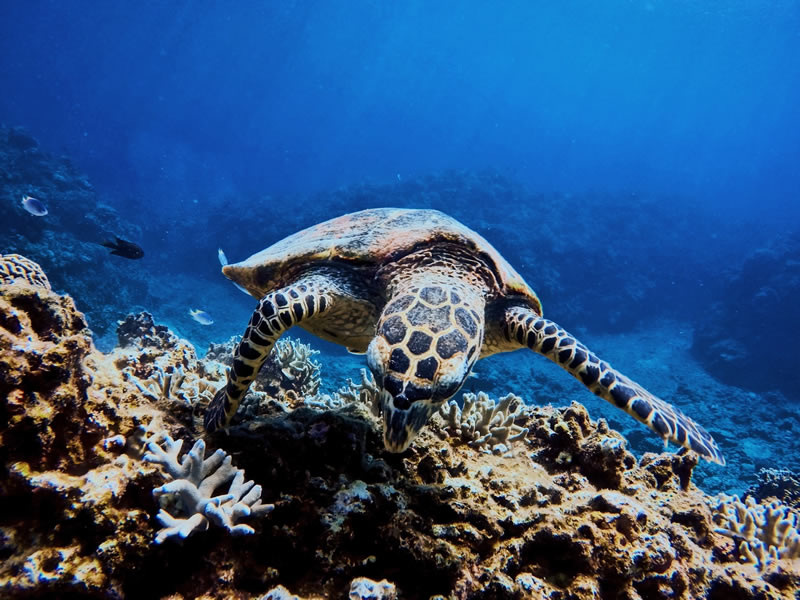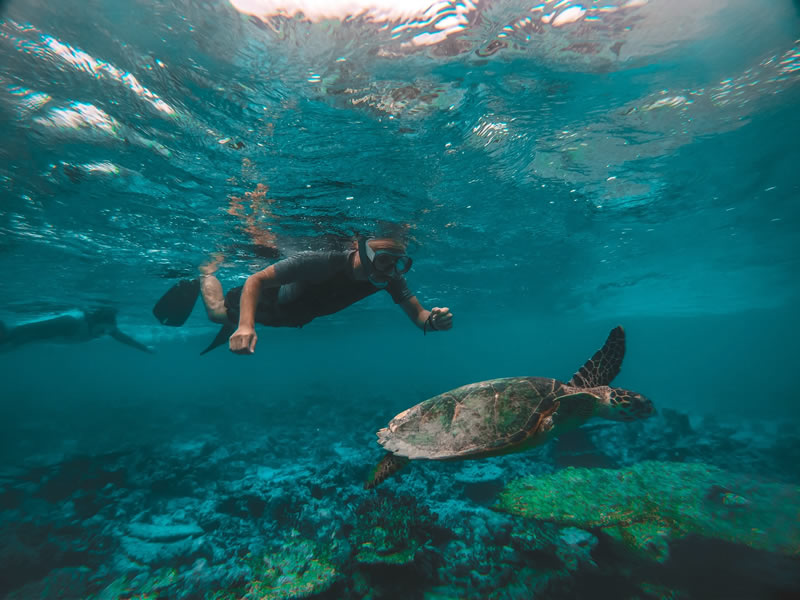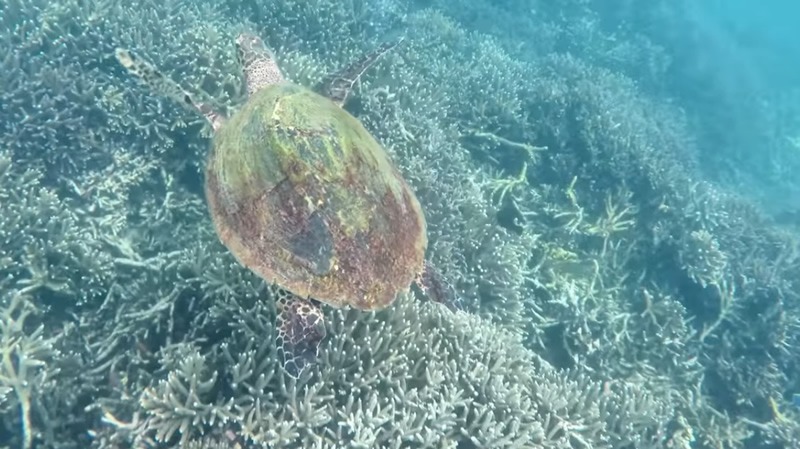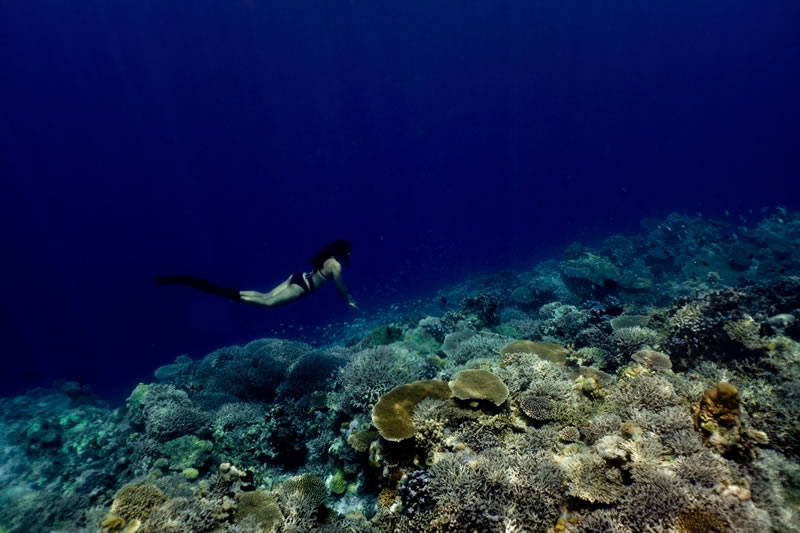
Places for Scuba Diving in Sri Lanka
The depth of the coral reefs around the island recorded at 5–10 meters and up to 40 meters. Underwater coral reefs, many species of coral fish, ancient shipwrecks, caves, and reef formation make Sri Lanka one of the best diving sites in the world. Coral reefs provide many interesting sites for scuba for diving in Sri Lanka and snorkelling.
Table of Contents
- Sri Lanka as a beach holiday destination
- Places for Scuba Diving in Sri Lanka
- Coral reefs in Sri Lanka
- El Nino effect on Sri Lanka coral reefs
- Shipwrecks
- Exploring shipwrecks in the Soth-West coast
- Diving, snorkelling in Hikkaduwa
- Why Pigeon island is an exceptional diving and snorkelling site
- Places to dive in Colombo
- Where can I find essential gears for scuba diving in Sri Lanka?
- How do I book a scuba diving in Sri Lanka?
Sri Lanka as a beach holiday destination
The pristine beaches around the island are a heaven for beach holiday lovers. Every year, thousands of tourists visit the beaches around the island. Beaches on the west coast and south are the most popular among tourists, while the east coast also attracts a considerable number of travellers from May to October. Most Sri Lanka trip packages are included with Sri Lanka beach tours. E.g., a Sri Lanka 7-day tour with a Sri Lanka beach tour offers a wide range of attractions, such as historical places, scenic hill country, wildlife parks and beaches.
Places for Scuba Diving in Sri Lanka
Sri Lanka, an Indian Ocean island, is surrounded by beautiful beaches, bays, coves, lagoons, and coral reefs, and the island claims several of the most popular diving spots in the world. The waters around the island are abundant with reefs, shipwrecks, caves, and reef formations, and they are inhabited by thousands of underwater flora and fauna species. Being an important trading place among the ancient traders, Sri Lanka ports were often visited by foreign merchant ships in the past. At the same time, the proximity to the East-West Trade Route enables the island to provide facilities for the bypassing ships.
Ancient seaports on the west coast of Sri Lanka were visited by sailors from Greece, India, Arabian countries and China. There had been a large number of ship movements in the region in the past and some of them disappeared in the water due to various reasons.
There were many ships were perished during the ancient time, of the east-west sea route near the island. Today, these shipwrecks are one of the major attractions of the island’s underwater world. Exploring the underwater world in Sri Lankan started in the 1960s and divers managed to discover a remnant of a ship that was transporting silver coins. Most of the shipwrecks on the island are being found in the southern part of the island.
Warm water around Sri Lanka houses thousands of underwater fauna and flora species and tempt surfers and divers around the world for Diving and Snorkelling in Sri Lanka. In fact, the opportunity to perform various water sports such as diving and snorkelling is one of the key reasons for many travellers to book Sri Lanka tour and beach holiday.
The depth of the coral reefs around the island recorded from 5-10 meters and up to 40 meters. Underwater coral reefs, many species of coral fish, ancient shipwrecks, caves, reef formation makes Sri Lanka, one of the best diving sites in the world.
Sri Lanka coral reefs provide many interesting sites for diving and snorkelling. The wide reefs are abundant with many exotic fish species which increases the underwater beauty. Coral reef, vibrant shoals of fish and shells are some attractions of the fascinating underwater world around the island.

Coral reefs in Sri Lanka
Sri Lanka’s coral reefs are very diverse; 183 species of coral and over 300 species of reef fish, as well as many marine invertebrates, are present in the inshore waters surrounding the island. The main reef areas are found on the west and south-west coasts and in the north-east around Trincomalee. Over 20 coral reef areas have been identified as in need of protection.
Four sites have so far been granted Marine Protected Areas (MPA) status. These are Hikkaduwa national park, Bar reef marine sanctuary, Buona Vista marine sanctuary and pigeon islands national park. These have all been given legal protection due to the availability of coral reefs and reef related fauna in the surrounding waters. In addition to these MPAs, the great and little basses off the south-east coast have been declared as fishery management areas.
Coral reefs are considered to be one of the world’s most diverse Eco-systems. It is of crucial importance that coral reefs around the world are protected and conserved. The benefits of healthy and biologically diverse corals reefs are wide-ranging and incredibly valuable. However, they face many threats, both as a result of human activity and natural events. It is estimated that a large part of the world’s coral reefs have already been destroyed and many of the surviving ones are currently placed under intense and growing pressures. The situation in South Asia is far worse than the global average; more than half of the coral reefs have been destroyed, and a further 10% are in a critical stage and likely to join the destroyer category within the next 10 to 20 years.
The human threats to the reefs are many and varied, the main ones being over-fishing and destructive fishing practices, unplanned coastal development and related pollution, tourism, the aquarium trade and coal mining. Natural pressures are terrestrial flooding and the consequent surface run-off of sediments, tropical storm damage, the plague of coral predators and coral diseases that are often caused by human pollution and discharge of ballast water from ships. Two other natural events that have occurred recently are the 1998 coral bleaching and the 2004 Indian Ocean tsunami.

El Nino effect on Sri Lanka coral reefs
Many of Sri Lanka’s reefs were badly affected by the bleaching, attributed to the El Nino weather pattern. Bar reef experienced almost total mortality of many corals species and Hikkaduwa lost about 40% of its live coral cover. Coral recovery has been slow in many areas partly due to sedimentation and overgrowth of algae preventing growth, but also because of the many damaging human activities that occur. The east coast corals are affected by blast fishing is rampant and increasing in occurrences in the Trincomalee region.
Shipwrecks
Apart from the coral other underwater attractions great reefs and little basses reefs, which located in southern Sri Lanka provides a site for an archaeological expedition.
Sri Lanka is an island surrounded by the Indian Ocean and the island was known to be a very popular trading point among ancient seafarers. For example, Godawaya was a port located in south-west Sri Lanka and traders from Greece, India, China as well as Arabian countries were calling this port very often.
The sea route which extended from the Red Sea to East Africa, India, China, and Southeast Asia, was known to be silk path, located just south of Sri Lanka. Since the country is located in this East-West shipping route country has been the famous host for ships visiting ancient ports of Southern, South-West, West and Eastern part of the country. The traders who were using East-West shipping route were calling to these ports in order to collect water, food and coal that they needed during their journey.
There are remnants of many ships that perished thousands of years ago. There are over twenty shipwrecks identified in southern Sri Lanka. The steamship that sank in 1889, Indian ship that sank the early 60s, a ship that was carrying a consignment of glass bottles, a ship with a consignment of brass that sank during the Dutch rule in Sri Lanka is some of the noteworthy on the list.
Exploring shipwrecks in the Soth-West coast
The coral reefs are known as great and little basses reefs of southern Sri Lanka (approx 6 to 7 miles away from mainland Sri Lanka) was the reason for many ships to have perished in the region. This hazardous region was called ‘Iron Pincer Island’ in the early days by Chinese Navigators while it was known to be a region with magnetic power for the Persians. There was a well-illustrated Navigational map to avert the hazardous region in the first decade of the fifteenth century. In the well-known fairy tale of ‘Arabian Nights’, it is described how the nails of the wooden ship were attracted toward the magnetic rocks and how the ship was destroyed.
Until the lighthouses established in 1970 the great and little basses reefs of southern Sri Lanka was a death trap for thousands of Navigators. The sea around the great and little basses hold a tremendous amount of valuables such as gold, silver and coins, which contained in the perished merchant ships.
Even though the underwater treasure in the region is not fully explored yet, a team of divers have discovered sacks of Indian silver coins in the very early 1960s. These coins were contained in a ship, which belonged to Indian Mogul Emperor Aurangzeb, who was the king of India from 1658 to 1707 and his father was well known Emperor Shar Jahan (who built Taj Mahal). Ill-fated ship was heading to China from India and it was sailing for silk trade as it was sunk in the southern Sri Lankan water due to an unknown reason. Some of the artefacts recovered from the scene are now being displayed at the Galle Marine Archeology Museum Sri Lanka.
Archaeologists have discovered the remnant of another ship, which sank more than 1000 years back and was, belongs to the firm by the name Clark and Company. Most of the bottles that sank with the ill-fated ship were removed by the treasure hunters, leaving very little from the consignment at the sight. Another ship, which was made of wood and carrying a large collection of brass bricks also sank in the hazardous region. This shipwreck is also being looted by the treasure hunters.
Now the archaeological site around the great and little basses is protected and under the supervision of Sri Lanka naval. Unauthorized diving in the region is prohibited. However interested people can receive permission from the Sri Lankan government in order to explore shipwrecks in the region.
Some of the silvers that recovered from the seabed were in “1000 Coins” bags and now the bags decay and coins in “lumps” of 1000 coins each. Diving in Sri Lanka can be combined with studying the various types of underwater ocean life and underwater photography. Many leisure travellers include it as an activity in their Sri Lanka road trip as they base in south, west or in the east coast.
There are plenty of possibilities to witness a large collection of reefs, plant life, corals, beautiful marine fish such as clownfish, rays, eels, Moorish idol, unicorn, porcupine, and Moorish angel. One can expect to see more than 20 different species of fish including bright yellow and black-striped butterflyfish, blazing turquoise-green of the parrotfish and, deep aquamarine-blue surgeonfish on regular diving.
The Corals which belong to families of Pocelloporidae (Flower Corals), Poritidae (Donnie Corals), Mussidae (Brain Corals), favidae (Ster Corals) and Aroporidae (Staghorn Corals) are commonly seen around the island.

Diving, snorkelling in Hikkaduwa
Diving with Sea turtles is another great experience that can be expected in Hikkaduwa, South-West Sri Lanka. Oliver Ridley Turtles approach the water off-shore in the afternoon as well as at night-tide mainly for feeding. Chances to observe them closely on the beaches of Sri Lanka are very high while they come to the surface for breathing every 30 minutes.
Sri Lanka water considered to be an ideal diving site for learners as well as for the experienced divers. There are many recognized diving centres around the island providing Service for the divers and they are equipped with all the modern scuba gears as well as Qualified instructors. Divers can explore the underwater world throughout the year in varying places, depending on the monsoon season. South-West is the best part of the island for diving from Nov-Apr with clear visibility up to 20 meters. From Apr to Nov considered being the best period for diving in East and North-East Sri Lanka.
Hikkaduwa, Ambalangoda, Dondra, Bentota, Negombo and Tangalle recognized as a diving hot spot as well as best beaches in the West and Southern part of the island. Nilaveli (Pigeon Island), Batticaloa, Passekudah, Kalmunai and Kattankudy considered being diving hot spots in East coast. A large number of leisure travellers, who spend their beach holidays in Sri Lanka gathering to these diving spots for diving and snorkelling. Diving and snorkelling are one of the most sought-after activity among the beach holiday lovers in Sri Lanka.

Why Pigeon island is an exceptional diving and snorkelling site
There are twenty-one nature reserves in Sri Lanka and two of them are marine nature reserves, namely, Hikkaduwa in the west coast and Pigeon Island on the east coast. Pigeon Island was first declared as a wildlife reserve in 1974, in order to make it a safe place for a large number of resident bird species. Due to the ecological importance and high Bio-diversity, Pigeon Island was declared as a nature reserve in 2003.
Pigeon Island nature reserve spreads over 470 hectares and one of the most attractive places among the tourists. If you have been to Nilaveli beach then you must have seen the pigeon island. The island, which is clearly visible from the Nilaveli beach, is the pigeon island and it is located about one kilometre away from the mainland. It takes about 15 minutes for the tourists to reach the island from Nilaveli. A set of boaters are ready to take you there, these boaters are anchoring around Nilaveli beach.
The island is a heaven for the bird watchers, due to a large number of resident bird species. The name “Pigeon Island” is directly attributed to the concentration of pigeons on the island. Even though it looks like one island to the mainland, this nature reserve consists of one large island and a smaller one.
Pigeon Island is surrounded by rocks and corals reefs. The shallow waters around the island allow you to have a closer look at a large number of fish, coral, and underwater flora species. Crystal clear and clean water around the island is recognized as one of the best places for snorkelling and scuba diving in Sri Lanka .
Even though El Nino (El Nino, an abnormal warming of surface ocean waters in the eastern tropical Pacific, is one part of what’s called the Southern Oscillation) affected the coral reefs around the country in 1998, destroying considerable amount of corals, surprisingly the coral reefs around the island was spared from El Nino effect. Therefore most of the coral reefs (71%) around the island are formed by live corals.
From the North and North-East directions of the island, one can see the beautiful sandy beaches and can be used for sunbathing. In the waters of North and North-west parts of Pigeon Island are several giant coral reefs. These reefs are about 200 meters in length and about 100 meters wide.
There is a large number of coral reefs, towards the outwards direction of the island beyond the main coral reefs. These coral reefs are formed like spikes and spread up to 15 meters deep into the water. There are 39 species of coral around the island and most of them are categorized under Favidae. 74% of these corals are Acropora species while the rest made of Montipora, Forites, Goalaxea, Favia, Favites, Platygyra and Leptoria species.
300 fish species have been identified in the waters of Trincomalee and 100 of them can be seen around the pigeon island. Several Fish species from Cleaner Wrasses such as labroides bicolour inhabits around the corals of Pigeon Island. Fish species living in the shallow waters such as Juvenile and Carcharrhinus melanopterus as well as deepwater fish species, living around coral reefs, such as Cheilinus imbri ata, are occurring around corals of pigeon island.
Waters around the island is inhabited by several species of endangered animal species such as Hawksbill turtle (Eretmochelys imbricata), Green Sea Turtle (Chelonia mydas) and Olive Ridley (Lepidochelys olivacea). These turtles are occurring here very often during their nesting period.
The highest point of the island is 15 meters above sea level. The island is mainly consisting of sand dunes, rocks and lime formations. One can see a coral island about 500 away from the island allowing access to examine the formation of Fringing Coral Reefs.
Since the island is located in the dry zone of Sri Lanka, annual rainfall in the island estimated to be between 1000-1700 mm. Even though the temperate in the mainland is surpassing the 30C ˚, the temperature in the island is moderated by the sea breeze and measured to be around 27C˚.
The vegetation on the island can be categorized under the arid zone forest and mainly consist of thorn bushes. There are several medium-size trees known as Gansuriya or Pacific rosewood (Thespesia populnea) in the island providing some shelter for the birds. These trees are around 20 feet in height and have a large crown with comparatively larger leaves.
The island is under the influence of Northeast monsoon from October to February. It is highly advisable to keep away from the island during this period, due to the highly active underwater current and strong waves of the sea.
Places to dive in Colombo
The newest addition to the shipwrecks collection in the island is identified as the SS Worcestershire, which sank during the First World War. The giant ship was 137 meters long and 16.6 meters in width. The shipwreck is to be found 12 km off the coast of Colombo city tour. A group of divers has identified the ship and it is located 57 meters below the surface and the ship is severely damaged from the inside. The ship had been occupied by the British soldiers at the time of the destruction.
It is believed that the ship was sunk by Germans and they have used sea mines for that purpose. The same group of divers has located another ship near Colombo and which is believed to be a British merchant ship called SS Perseus.
Both vessels had perished during the First World War, the mines were laid by the German battleship “SMS Wolf”. The second ship had been located around 40 m below the surface. The young divers had been able to explore both sites and claimed these sites have become large coral reefs and they are providing the best environments for a large number of underwater sea creatures.
With identifying the shipwrecks off Colombo, the west coast will be becoming an attractive venue for dive enthusiasts in the world. Southern Sri Lanka had been on the radar of divers for a long time and west coast had been neglected due to the lack of such sites. The identification of new shipwrecks believed to change the mind of divers and attracts them to the west coast as well.

Where can I find essential gears for scuba diving in Sri Lanka?
Essential gears required for scuba diving in Sri Lanka and snorkelling can be bought or rented in the resort areas, especially where the diving and snorkelling are been done such as Hikkaduwa. There are many places in the resort areas renting essential items for diving, therefore it is advisable to check with several service providers to get the best price of the equipment.
How do I book a scuba diving in Sri Lanka?
There are many local tour operators providing packages for scuba diving in Sri Lanka and snorkelling. They are mostly concentrated in the resort areas such as Hikkaduwa, Bentota, Unawatuna etc. The visitors are free to drop into these diving centres and they can book an activity continuously. The guest has an online booking option with some of the service providers for diving and snorkelling.
Usually, the scuba diving in Sri Lanka or snorkelling tour offered as a package fulfilling all requirements for the activities such as the boat, instructor, equipment etc. Usually, the rates depend on the duration of the dive or snorkel. Diving and snorkelling are started early morning and normally these tours are not offered in the evening as the high tide deteriorate the visibility in the offered.
